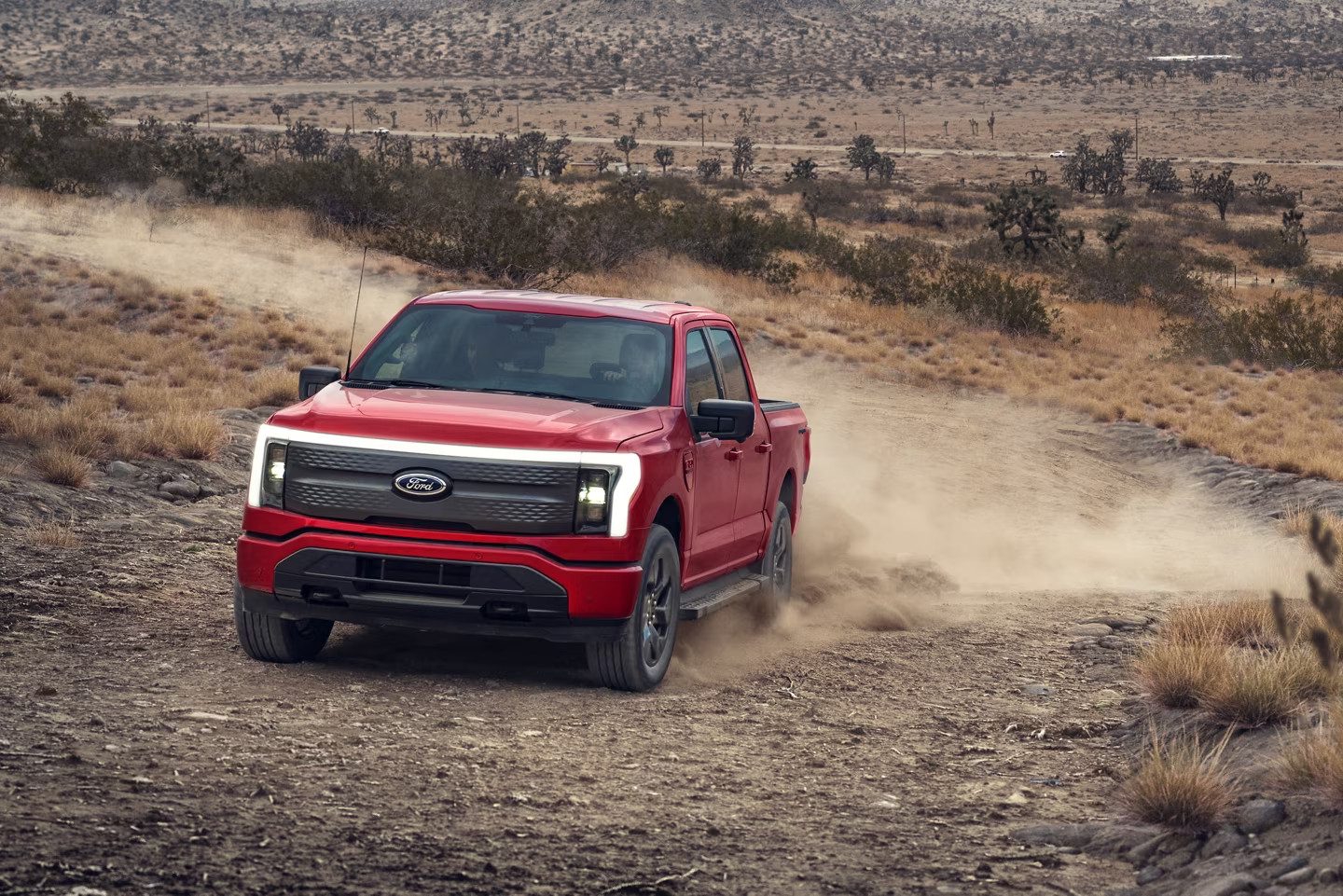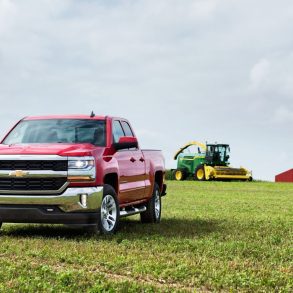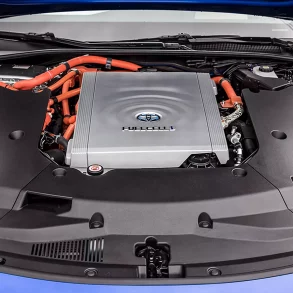Summary
- Ford is cutting production of the F-150 Lightning in half by April 1, 2024
- Demand for other vehicles in the small and medium truck markets is the primary reason
- A third shift for production of each the Ranger and Bronco was needed, and much of that workforce is being pulled from the Lightning production line
- EV sales, despite being very strong YOY 2022 to 2023 for Ford, are also not at predicted levels, so there was room to reduce production
- This also can be viewed as a strategic resource move, getting EV experienced workers into production lines before EV versions of those models arrive
Ford’s recent announcement of a reduction in the production of the F-150 Lightning from two shifts per day to just one, effective April 1, 2024, has sent murmurs through the automotive industry. This announcement comes as Ford had a superb year for EV sales in 2023, through both the Mustang Mach-E and the F-150 Lightning. To understand the reasons why Ford has made this decision, analysis shows that there are multiple contributing factors, which we will discuss in detail.
Realignment Of Workforce
The biggest factor in Ford’s decision to reduce the production of the F-150 Lightning is that consumer demand has skyrocketed for two of the other trucks in their lineup, the Ranger and the Bronco.
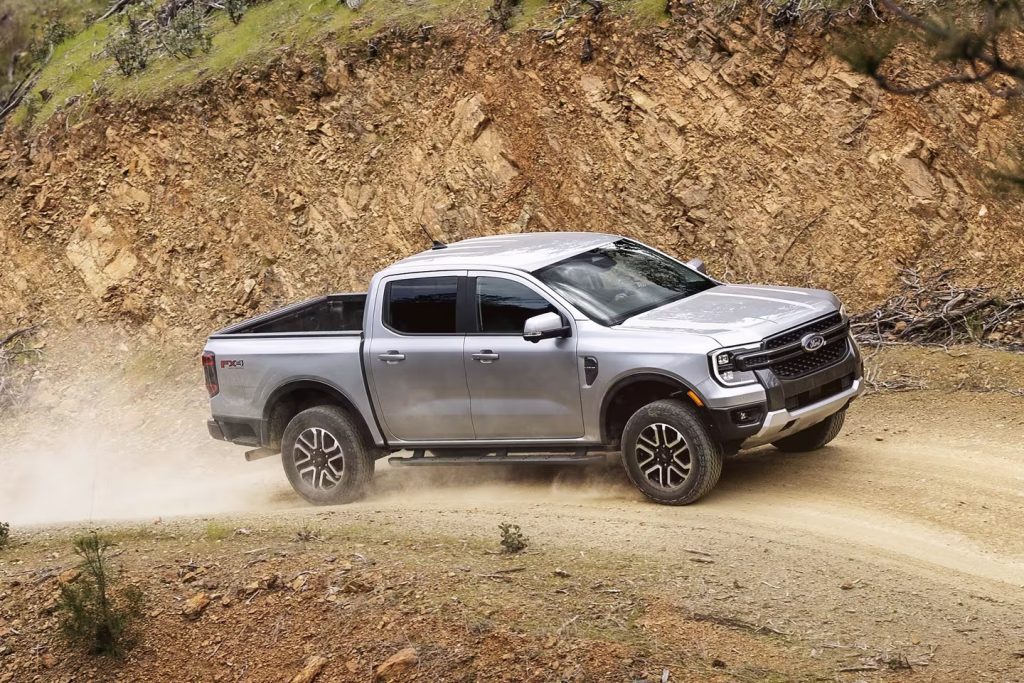
Demand is so high that Ford needed to create a new third shift for production of both, totaling 1,400 new positions on the production line, which will keep the assembly line moving 24 hours a day. Even then, that may not be enough to keep up with the market demand for both vehicles.
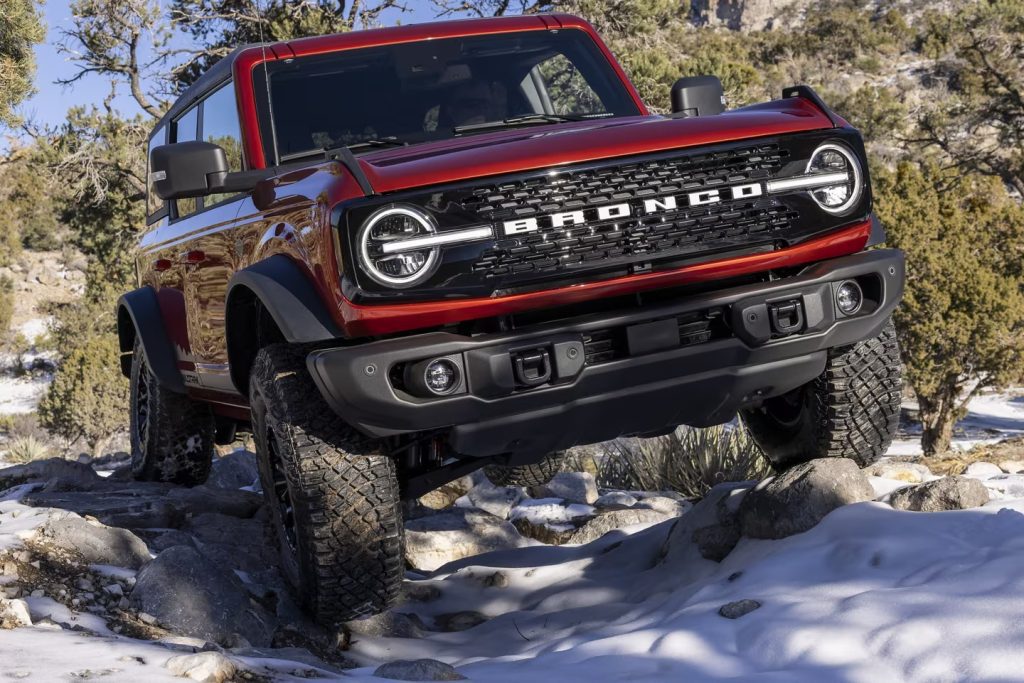
Naturally, part of that workforce needed to come from somewhere. While part of it will be through new hires, between 600 and 700 people on that workforce will be moving from Lightning production to the Bronco and Ranger. This will bring experienced and already-trained hands to bear on the production line where efficiency and consistency are going to be key factors, while also training up new hires.
Market Dynamics & Consumer Trends
The decision to scale back F-150 Lightning production is not solely a reaction to the demand for the other trucks in their lineup, it is also influenced by a nuanced understanding of market dynamics and evolving consumer preferences. Despite being in what many label as the “EV revolution,” the truth of the matter is that even though Ford saw a YOY increase in Lightning sales of 55% from 2022 to 2023, it still fell short of the expected 3,200 F-150 EV’s expected to sell per week. By reducing production to one shift per day, the Lightning will now be produced closer to the average sales figure of about 1,500 units per week, +/- 100 units.
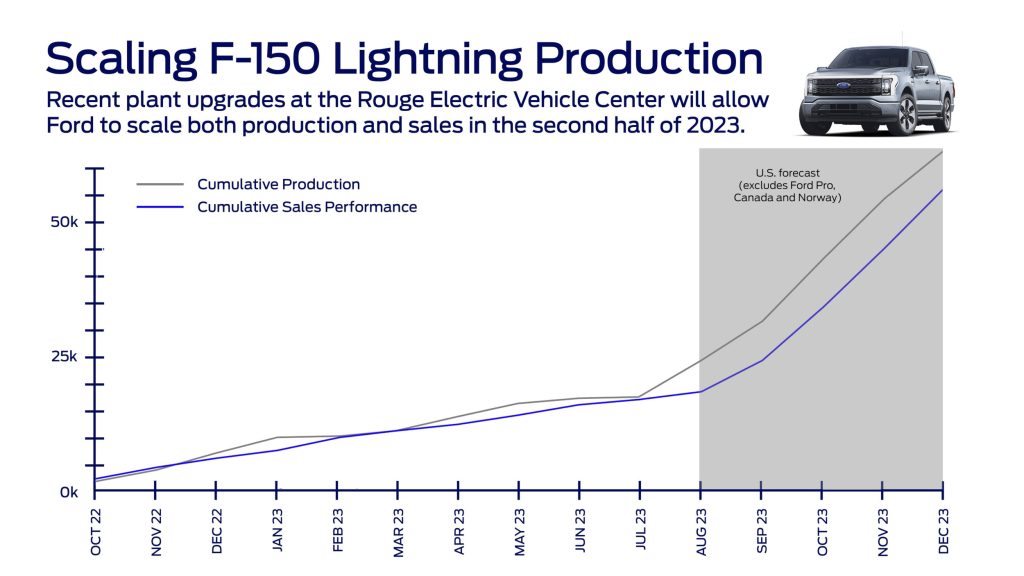
Research also suggests that while there is a growing interest in EVs, a key factor is that that interest is not always translating into sales. EV’s are a very new market, spanning less than two decades in the modern interpretation. While it may seem like a “no-brainer” on paper, Ford had to make the call between producing 150,000 Lightning’s per year to get ahead of an expected sales boom, or increase production on vehicles that are selling now. The consumer trend is still towards SUVs and trucks in North America, but much, much more on the petrol and diesel powered side of the market.
Strategic Resource Allocation For Future Vehicles
The reduction in F-150 Lightning production may not only be a response to current sales challenges, but also a forward-looking move aimed at positioning themselves as a leader in the EV space for the second half of the 2020s. Taking a page from the Germans, specifically Porsche and their rollout of EVs, Ford is positioning itself to have a strong base with the Mach-E and Lightning, and release EV versions of existing vehicles, much like how Stuttgart did with the Taycan in 2019 and very recently the Macan in 2024 as its first EV CUV.
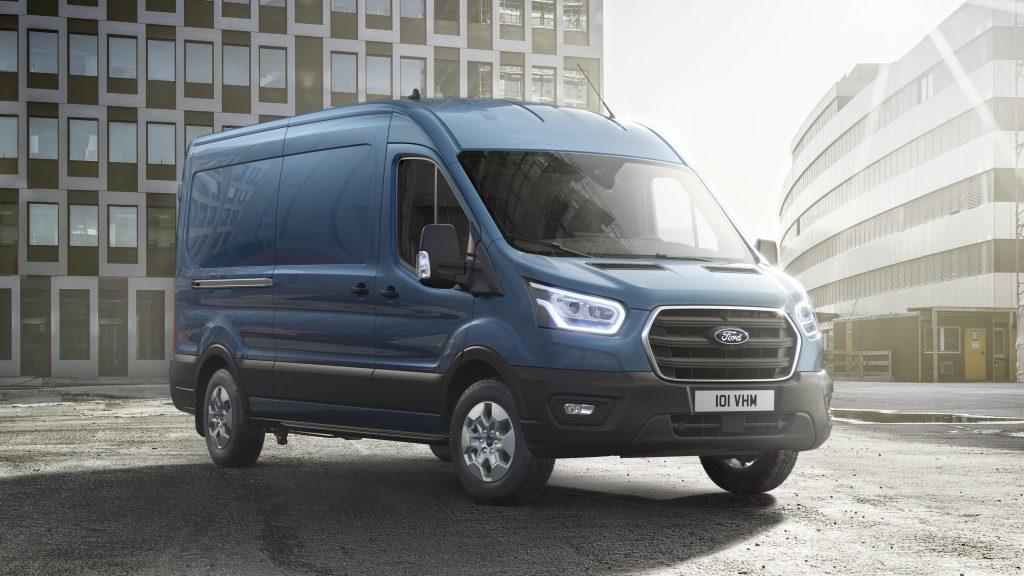
Put in a simpler way, Ford has ambitious plans for electric vehicles, and the F-150 Lightning is a pivotal part of its electric lineup. By adjusting production targets, Ford is very likely to be strategically directing resources towards the development of next-generation electric technologies and vehicles. This means that we can expect to see a new EV model line in the later 2020s, with current vehicles such as the Edge, Explorer, Bronco, and the like getting EV models in the near future to fill in before those new vehicles launch.
In Sum
Put simply, the reduction in F-150 Lightning production by Ford for 2024 is a multifaceted decision driven by a combination of factors. Workforce challenges, market dynamics, strategic resource allocation for future vehicles, and considerations of near-future releases of other current models with EV powertrains all play pivotal roles in shaping this strategy.
This is not to say that Ford is abandoning the Lightning, not at all. Our own thoughts on this reflect what many out there in the market are already saying: Adoption of EVs has been slower than expected in the truck and large vehicle markets. EVs are flying out of factories at Porsche, Tesla, Audi, BMW, and the like when they are executive saloon sized or smaller. Trucks and SUVs with electric powertrains, however, have had a much more difficult time gaining market traction, and that, we believe, is one of the key factors in Ford’s decision at the end of the day.
Sales and volume predictions can show one thing, but actual market data is where the truth lies, and as it stands, EV trucks and SUVs are facing an uphill battle.

